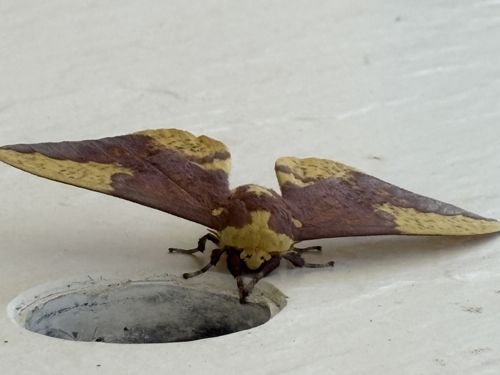Imperial Moth
Scientific Name: Eacles imperialis
Order & Family: Lepidoptera, Saturniidae
Size: Wingspan: 80-140 mm (3.1-5.5 inches)

Natural Habitat
Forests, woodlands, and suburban areas where host trees are present. They can be found in both coniferous and deciduous forests.
Diet & Feeding
Adult Imperial Moths do not feed. Larvae (caterpillars) are polyphagous, feeding on the leaves of a wide variety of deciduous trees and shrubs, including pines, oaks, maples, sweetgum, and sassafras.
Behavior Patterns
Adults are nocturnal and often attracted to lights. They are univoltine (one generation per year) in northern parts of their range and bivoltine (two generations per year) in southern parts. The larvae feed solitarily on host plant leaves.
Risks & Benefits
Generally harmless to humans. While the caterpillars feed on trees, they are rarely present in numbers large enough to cause significant defoliation or economic damage. As pollinators of night-blooming flowers and a food source for birds and other animals, they contribute to the ecosystem.
Identified on: 8/25/2025